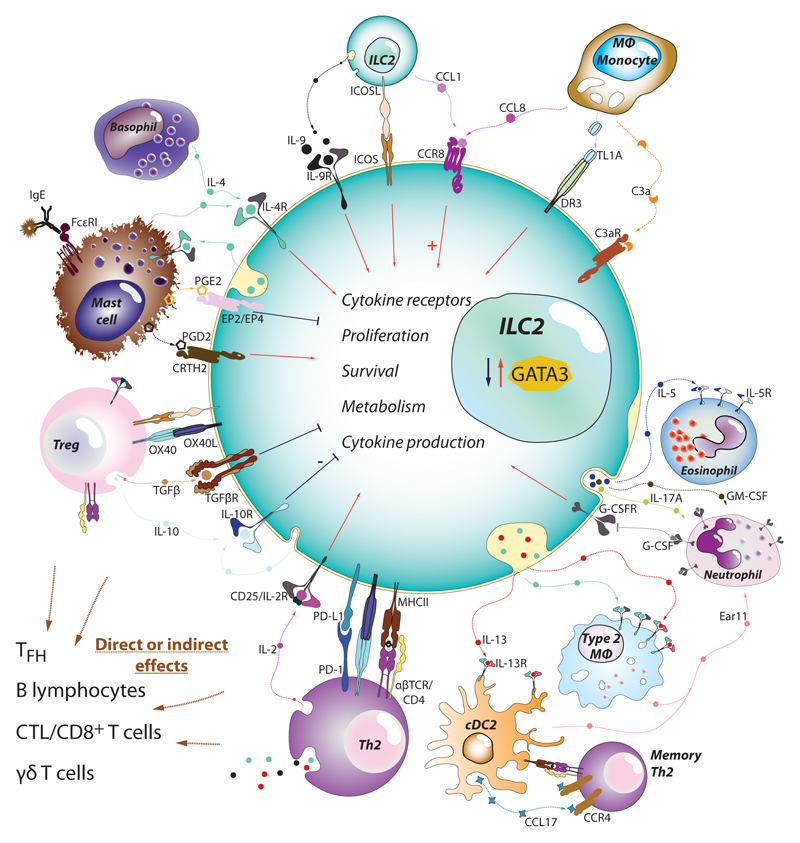Figure 3.
ILC2s as central playmakers within the immune cell network in asthma. Since their discovery, ILC2s have been found to directly interact with most of the immune cells participating in asthma and allergy. ILC2s integrate the information provided by alarmins with the signals derived from other innate leukocytes such as basophils, neutrophils, macrophages and mast cells. Cytokines (IL-2, IL-4, IL-9, IL-10…), chemokines (CCL1, CCL8), ligand-receptor interactions (ICOS-ICOSL), lipid mediators (PGD2, PGE2, PGI2, LTD4…) and other soluble factors will stimulate or suppress ILC2 expression of alarmin receptors, proliferation, survival, transcriptional factor levels (e.g. GATA3), and cytokine production. The net effect is the capacity of ILC2s to activate and positively modulate T cells, macrophages, dendritic cells into becoming type-2 immune cells (Th2, M2 or cDC2 respectively). In parallel, ILC2s also provide support for mast cells, eosinophils and neutrophils, effectors that will contribute extensively to the pathology associated with asthma

